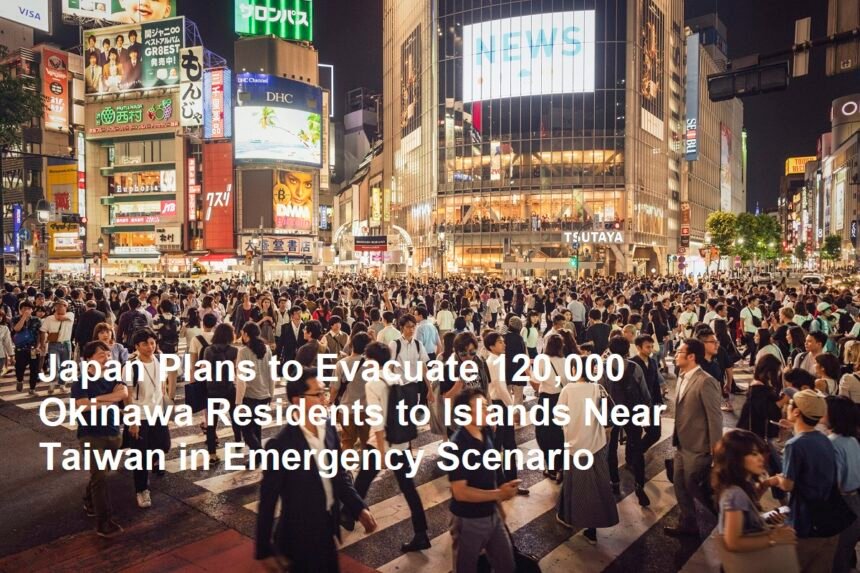Tokyo—Japan is preparing a large-scale evacuation plan for approximately 120,000 residents from Okinawa to nearby islands close to Taiwan in the event of a national emergency, Chief Cabinet Secretary Yoshimasa Hayashi announced on Friday. The Japanese government has designed this contingency plan based on the assumption of a potential security crisis in the region, amid rising geopolitical tensions.
Evacuation Plan and Its Implications
According to Hayashi, the evacuation strategy is part of a broader effort to ensure the safety of civilians in case of conflict or other emergencies that could threaten the Okinawa region, which hosts a significant U.S. military presence. The plan involves relocating residents to safer islands in Japan’s southern territories, which are considered more secure than Okinawa due to their distance from potential conflict zones.
“The government is prioritizing the safety of its citizens and is making necessary preparations to respond effectively to any emergency,” Hayashi said in a press conference. He emphasized that the plan is still in the early stages of development, with further discussions needed to refine logistical details, transportation methods, and coordination with local authorities.
The decision comes amid heightened concerns over regional security, particularly in the East China Sea and Taiwan Strait. Japan has been closely monitoring developments in the Taiwan region, as any instability there could have direct consequences for Okinawa, given its geographical proximity.
Why Okinawa?
Okinawa, located just over 600 kilometers (370 miles) from Taiwan, is home to over 1.4 million people and serves as a strategic military hub for both Japan and the United States. The island hosts several key U.S. military bases, making it a potential focal point in case of a regional conflict.
Japanese defense experts have warned that Okinawa could be vulnerable in the event of a crisis involving Taiwan, particularly if military tensions escalate between China and the U.S. Beijing has repeatedly claimed Taiwan as part of its territory and has increased military activities in the region, raising fears that a potential conflict could spill over into surrounding areas, including Japan’s southern islands.
Response from the Public and Analysts
The evacuation plan has sparked mixed reactions among Okinawa residents. While some view it as a necessary precaution to ensure civilian safety, others worry about the potential economic and social impact of a large-scale relocation. Businesses and local governments have expressed concerns about how such a plan would be implemented without disrupting the daily lives of residents.
Security analysts believe Japan’s plan reflects its growing awareness of potential threats in the region. “Japan is taking proactive steps to prepare for worst-case scenarios,” said Koji Watanabe, a defense analyst at the Tokyo Policy Institute. “This move aligns with Japan’s increasing focus on national security and its deepening alliance with the U.S.”
Meanwhile, China has yet to officially respond to Japan’s evacuation plan, but experts predict that Beijing may view it as an indication that Tokyo is aligning itself more closely with U.S. strategies in the region. Tensions between Japan and China have already been high due to territorial disputes over the Senkaku Islands, known as Diaoyu in China.
Next Steps and Future Preparations
The Japanese government will continue refining its evacuation framework, including identifying transportation routes, shelter locations, and emergency response teams. Coordination with local governments and military forces is expected to play a crucial role in ensuring the plan can be executed efficiently if needed.
Japan’s recent security policies have shown a shift toward stronger defense measures, including increased military spending and closer cooperation with allied nations. This evacuation plan is another step in Tokyo’s strategy to prepare for potential threats in a rapidly changing geopolitical environment.
While the plan remains hypothetical at this stage, its existence highlights Japan’s growing concerns over regional stability and its commitment to protecting its citizens from unforeseen crises. In the coming months, further discussions will determine how this ambitious evacuation strategy could be put into action if necessary.












